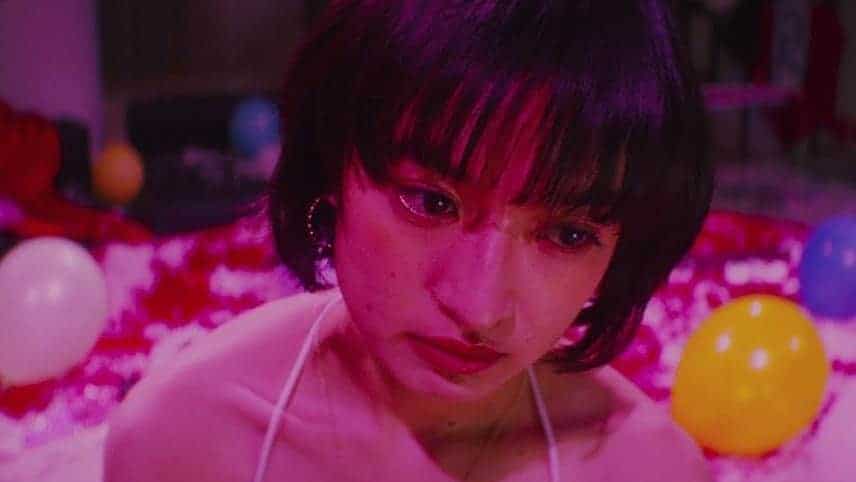Yasu hails from Tokyo, Japan and had resided in Los Angeles for more than 20 years. He studied at California State University at Northridge (88 ~ 93) and holds a degree in Film/TV from Columbia College in Hollywood (96 ~ 98), USA. His early independent films, such as “EMBOLISM,” “KELLENE”, “PETRA” had won various awards like 1st Place, 24th CA Media Film Festival (92), Gold Medal,20th Japanese Media Film Festival (92), etc.
In 2010, Yasu started the Film/TV production company, 42nd PICTURES SDN. BHD. with Bea Tanaka, his Malaysian wife, in Kuala Lumpur to make TV/ Feature films for domestic and international market. As they are passionate about education, 42nd ACADEMY has been active to curry out the series of Yasu's classes, VISUAL STORYTELLING in Malaysia and Japan.
Bea Tanaka has 18 years of experience as a TESL (Teaching English as a Second Language) teacher and Special Education Teacher for the Deaf. She has a Degree in Special Education from UKM (National University of Malaysia). She obtained early retirement to assist her husband, Yasu Tanaka in his lectures in Malaysia.
In 2010, Bea was involved in SSFFA Malaysia(Short Shorts Film Festival& Asia) as a Producer and Liaison Officer between Japan and FINAS who were the main sponsors for the event. Her background as a teacher and her understanding of Malaysian culture and traditions enables her to mediate and co-ordinate collaborations in joint venture projects with foreign entities.
She is fluent in English, Malay, Cantonese and Mandarin. Her fluency in Malay and English is of great advantage to them as a team as they can analyze and develop scripts in Malay. As a team, they were involved in the “Filem Kenegaraan” Project under FINAS as Script Consultant where all the synopsis and scripts were written in Malay.
We speak with them about their feature film “Nota” and the path that led to its completion, the approach the film implements, the cast, Bako National Park and Sarawang, Malay cinema, and other topics.
Can you give me some details about the path that led you both to work in cinema, and particularly in Malaysia?
Yasu: “My own conception of storytelling and filmmaking have been carved from my experiences in 3 culturally diverse and unique entertainment industries…here in Malaysia, my country of birth Japan, and the epicentre of filmmaking, Hollywood. This rich palette serves me well when looking for new, original, bold, and exciting ideas that have
universal appeal.”
(The above is from our website, www.42ndacademy.com)
I went to the States to study filmmaking when I was 20 years old. Later I started working there as a script writer, as well as teaching the craft of storytelling. After I married Bea, we went to Bako National Park as a sort of mini honeymoon in 2007, that is when I was inspired to create the setting of story. Meanwhile, we were trying to produce our 1st feature film in Malaysia (not NOTA), but things didn't turn out well. During this tough
time, we also went through the struggle of our relationship as husband and wife. Those external and internal experiences became the seed to create the movie, Nota.

Lately we spoke about this topic in our screening event.
 Bea: I come from a totally different background before I married Yasu, I was a teacher for 18 years, my adventure into film making started after meeting Yasu. It was a steep learning curve for me, from teaching to producing, a challenging and satisfying experience.
Bea: I come from a totally different background before I married Yasu, I was a teacher for 18 years, my adventure into film making started after meeting Yasu. It was a steep learning curve for me, from teaching to producing, a challenging and satisfying experience.
The notes regarding the film suggest that its initial purpose was to highlight the attractions of Sarawak and particularly the Bako National Park. How did this “mission” came to be?
Yasu: We didn't have any intention to promote Bako National park (as a tourist spot) through Nota in the beginning, but of course we ended up highlighting the beauty of nature there. South East Asia is filled with rich locations. Sometimes local people cannot appreciate as they take it for granted. I can appreciate and value the local locations and cultures through outsiders' view.
Bea: As Yasu said, being Malaysian, we always take what we have for granted. Through the years, I have learnt to really look at Malaysia from a foreigner's eye and what we have is pretty amazing and we want to show the world what we have with our projects.
The film starts as a social drama but soon turns into a kind of a thriller. Why did you choose this approach? I found the characters of both Erin and Jemat, fascinating. Can you give us some details about their conception? Why does Erin end up as a murderer and why did you choose to make Jemat so creepy and dangerous, at least seemingly?
 Yasu: Erin has a small hope to rekindle their marriage in the beginning, but at the same time, she doesn't realize that was wishful thinking on her part, only her imagination.
Yasu: Erin has a small hope to rekindle their marriage in the beginning, but at the same time, she doesn't realize that was wishful thinking on her part, only her imagination.
The story starts with minimum dialogues (odd silence) to pull the audience into Erin's mind, so the audience can start a journey (to the National park) with her. Also. in the beginning, the premise of the story is stated by herself.
The boat man appears as their guide, but at the same time, he is a person who really influenced and brought out Erin's dark side. As Erin transforms into the boat man, bit by bit through her journey, she learns how to be violent indirectly from him. Her vivid and wild imagination takes control of her, she breaks through the thin line and commits a
crime, killing her husband.
(Water surface is one of the image system to represent the thin line.)
Later the boat man blackmails her, so Erin has to kill him too, but did she really succeed to terminate her dark side by killing him? No, the ending of the movie implies that she cannot escape, as she has to live with what she has actually done even if she is free.
 Erin and the boatman are represented as a mirror image. (Even the bald guy is a foreshadow of the boatman, before his 1st appearance on screen.)
Erin and the boatman are represented as a mirror image. (Even the bald guy is a foreshadow of the boatman, before his 1st appearance on screen.)
 How did you guide Maya Karin and Ramil Hassan for their parts? In general, how was the casting process for the film like?
How did you guide Maya Karin and Ramil Hassan for their parts? In general, how was the casting process for the film like?
Yasu: As I don't speak Malay, I tried to apply Visual Storytelling as much as possible. We worked with actors (and all crews) with a storyboard rather than just a script.
 Bea: When casting for “Nota”, we had to be practical. As shooting was 80% outdoors and on water, the cast had to be tough and speak English well as it is needed for their character (dialogues with Mayumi, the Japanese lady). Maya and Hans fit the bill, and this is the first time for them to act in a movie together. The actor that played Jemat the boatman, Ramli Hassan is from Kampong Bako, one of the boatman at the Kampong Bako jetty is his brother. Since he plays a boatman, Ramli actually learnt how to maneuver the boat from his brother. We worked with him on the dialogue to make sure it has the authentic Sarawakian slang, and the extras were cast from Sarawak so to get the distinct
Bea: When casting for “Nota”, we had to be practical. As shooting was 80% outdoors and on water, the cast had to be tough and speak English well as it is needed for their character (dialogues with Mayumi, the Japanese lady). Maya and Hans fit the bill, and this is the first time for them to act in a movie together. The actor that played Jemat the boatman, Ramli Hassan is from Kampong Bako, one of the boatman at the Kampong Bako jetty is his brother. Since he plays a boatman, Ramli actually learnt how to maneuver the boat from his brother. We worked with him on the dialogue to make sure it has the authentic Sarawakian slang, and the extras were cast from Sarawak so to get the distinct
accent of Sarawakian Malay.
The narrative of the film features much surrealism, and the borders between reality and dream are often non-existent. Why did you choose this style? How difficult was it balancing all the aforementioned elements?
Maximilian Schmige's cinematography is impressive. Can you give us some details about your cooperation with him?
Yasu: Mr. Hassan used a perfect word to describe the work I attempted; Landscape vs Mindscape.
“Nota” is the story about Erin's psyche. All visual elements in the movie represent that, but we cannot confuse the audience. That's why the image system has to be consistent under certain rules. Max did a great job to visualise my intentions. We auditioned many
DoPs in LA through AFI (American Film Institute), where Max graduated from. We shared many references from various art forms, paintings, photography, movies, etc.

How was the shooting like? Any memorable episodes, good or bad?
Yasu: The biggest challenge was to work with water. We needed to study the cycle of tide to have the pictures we wanted. Needless to say, “cycle” was one of the key elements I tried to emphasize in “Nota”; Cycle of tide, nature, woman body, etc.

What is the general situation with Malay cinema, in your opinion?
Bea: Malaysian cinema is very unique. There are 3 major ethnic groups Malay, Chinese and Indian living together in harmony. We need to create an identity in the global market. Things have been interesting with the box office performance of some movies, and audiences' are starting to go to Malaysian movies.
Are you working on any new projects?
Bea: Two projects are under development.
— Terbalik (Upside-Down)
This project is ready to shoot as we have been in pre production since the 3rd quarter of 2016. It got attention regionally, as the film won the Aurora Producing Award in Singapore's South-east Asia Financing Forum (SAFF) in Nov 2016. Then in March 2017, we went to Hong Kong Asia Financing Forum (HAF2017), as one of the 24 projects shortlisted
that year. It is at HAF that we met Ivanhoe Pictures (they produced Crazy rich Asians) where they optioned “Terbalik” for remake rights in 34 countries. We are in the midst of settling the finance for it, looking at investors and also planning a crowdfunding campaign.
— Ice Show
This is another project that we are developing, and is Yasu's passion project as he was a competing figure skater in Japan before he went to states. Below is link to a video we plan to upload every month, this is Episode 1, we have uploaded 5 episodes, its all on 42nd Pictures YouTube channel
















